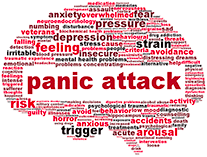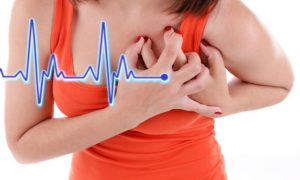American singer and songwriter Miley Cyrus recently felt a panic attack was going to grip her in a middle of performance and eased her fears by talking to the audience. Bollywood actors like Deepika Padukone too have talked about getting panic attacks during stressful shoot scenes. But what exactly is panic attack? How do you know if you are having one? Do they indicate any serious trouble?
“Panic attacks are fear responses that are abrupt, intense, and highly disruptive to the individual’s capacity to function in response to the fear. These can occur on their own or as part of various disordered states such as social anxiety, generalized anxiety, or a specific phobia,” says Arouba Kabir, Mental Health Counselor, A wellness Coach, and Founder, Enso Wellness.
You may feel your chest suddenly tightening, a sense of danger, unreasonable fear, a sense of losing control or you may feel you are having a heart attack or worse are about to die. Ever felt that way? These are some of the common signs of panic attack.
It is not abnormal to experience panic attacks once or twice in a lifetime when faced with extremely stressful situation but if they are too frequent it could mean you are suffering from panic disorder.
“If you’ve been having recurrent panic attacks to the point it’s disrupting your every day functioning and overall wellbeing – you may be dealing with a state called, panic disorder,” says Kabir.
“Panic attacks are sudden manifestation, often without any warning signs preceding. They may occur at any time – in between of a meeting, while driving a car, while sleeping and absolutely any other moment of your day,” adds the expert.
The signs and symptoms of a panic attack may vary depending on the person’s stressor. What’s commonly seen in people suffering from panic attack is an overwhelming fear that something bad is going to happen. “It may leave you feeling drained out and extremely exhausted,” says Kabir.
Signs and symptoms of a panic attack:
* An impeding sense of doom or danger
* Feeling as if you’re losing control
* Increased heart rate, heart pounding, palpitations and sweating
* Tightness in your chest leading to difficult breathing
* Hot or cold flashes
* Nausea, Abdominal cramping, loose motions
* Headache, light-headedness, dizziness or a feeling of unconsciousness
Causes of panic attack
“Some research suggests that our body’s natural fight-or-flight response to danger is involved in panic attacks. Panic attacks don’t necessarily have a definitive cause – it can be due to genetic reasons, facing extremely stressful situations or experiencing changes in the functionality of your body and mind. For example, if a speeding car came after you, your body would react instinctively. Your heart rate and breathing would speed up as your body prepared for a life-threatening situation. Many of the same reactions occur in a panic attack,” says Kabir.
It is important to identify the potential triggers of your panic attack and ways of dealing them.
How to deal with panic attack
Here are some ways you can try to control the occurence of your panic attacks, according to Kabir:
Deep breathing: Calming oneself is the mainstay during any situation involving a sensitized emotional state. This can be achieved efficiently by deep breathing in for a count of four, holding for five seconds and exhaling slowly in next six seconds. This helps slow your breathing and heart rate down and creates an overall feeling of calm.
Practicing mindfulness: This is the next step where one should try and sit, lay down comfortably and close their eyes and try and feel their own self, their body. Trying to cut off from the stressors so as to lower the heart rate. It can also be practised by visualization or imagery where one can think of things that bring them peace and calmness. Positive self-talk plays a significant role in helping you transport to a mental safe state where you don’t feel threated by the stressor.
Treatment for recurring panic attacks
It depends on the underlying cause. It’s important to see a medical practitioner for a proper diagnosis. Treatment for panic disorders can include lifestyle changes like doing some physical activity that improves the flow of positive hormones in the body. One should try avoiding substances like nicotine, caffeine etc to avoid being in an overwhelmed state.
Another way is to start positively talk to yourself, since positive thoughts will lead to positive feelings and behaviour, widely known as CBT (Cognitive Behaviour Therapy).
Panic disorders can be treated with medications but that should always follow a doctor’s consultation.
“While panic attacks themselves are not dangerous, they can be a symptom of more serious underlying conditions. It’s important to see a healthcare provider to test for physical conditions, and to find the specific cause of the attacks,” says Kabir.





































